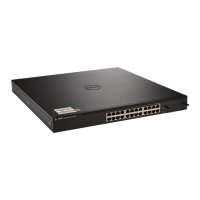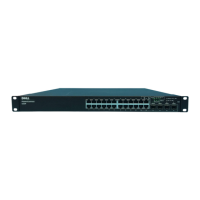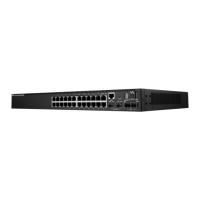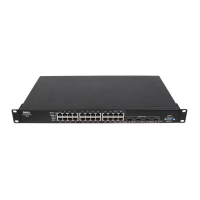696 Configuring L2 Multicast Features
decisions for packets that arrive with a multicast destination MAC address. By
limiting multicasts to only certain ports in the switch, traffic is prevented
from going to parts of the network where that traffic is unnecessary.
When a packet enters the switch, the destination MAC address is combined
with the VLAN ID, and a search is performed in the Layer 2 MFDB. If no
match is found, then the packet is flooded. If a match is found, then the
packet is forwarded only to the ports that are members of that multicast
group within the VLAN.
Multicast traffic destined to well-known (reserved) multicast IP addresses
(control plane traffic) is always flooded to all ports in the VLAN. The well-
known IP multicast addresses are 224.0.0.x for IPv4 and FF0x:: for IPv6.
Multicast data traffic is flooded to all ports in the VLAN if no multicast
router ports have been identified. Once a multicast router port is identified,
multicast data traffic is forwarded to the multicast router ports. The MFDB is
populated by snooping the membership reports sent to the multicast routers.
This causes multicast data traffic to be forwarded to any hosts joining the
multicast group.
What Is L2 Multicast Traffic?
L3 IP multicast traffic is traffic that is destined to a host group. Host groups
are identified by class D IPv4 addresses, which range from 224.0.1.0 to
239.255.255.255, or by FF0x:: or FF3x:: IPv6 addresses. In contrast to L3
multicast traffic, L2 multicast traffic is identified by the MAC address, i.e.,
the range 01:00:5e:00:00:00 to 01:00:5e:7f:ff:ff:ff for IPv4 multicast traffic or
33:33:xx:xx:xx:xx for IPv6 multicast traffic.
When a packet with a broadcast or multicast destination MAC address is
received, the switch will flood a copy into each of the remaining network
segments in accordance with the IEEE MAC Bridge standard. Eventually, the
packet is made accessible to all nodes connected to the network.
This approach works well for broadcast packets that are intended to be seen or
processed by all connected nodes. In the case of multicast packets, however,
this approach could lead to less efficient use of network bandwidth,
particularly when the packet is intended for only a small number of nodes.
Packets will be flooded into network segments where no node has any interest
in receiving the packet.
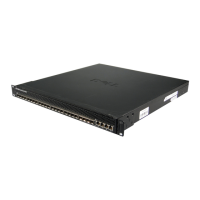
